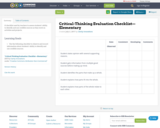
A checklist used by teachers to assess students’ ability to identify and use credible sources as they work on activities and projects.
- Subject:
- English Language Arts
- History
- Social Science
- Material Type:
- Assessment
- Date Added:
- 07/03/2017

A checklist used by teachers to assess students’ ability to identify and use credible sources as they work on activities and projects.

A checklist used by teachers to observe and record students’ ability to critically evaluate the credibility of information.
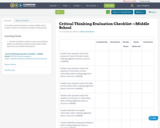
A checklist used by teachers to assess middle school students’ ability to evaluate the quality of information.
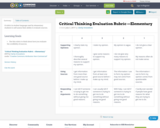
A rubric in student language used by elementary students to self-assess their ability to evaluate sources.
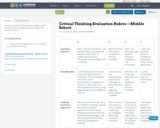
A rubric in student language used by middle school students to self-assess their ability to evaluate the quality of sources.
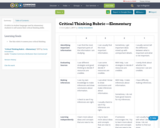
A rubric in student language used by elementary students to self-assess their critical thinking skills.
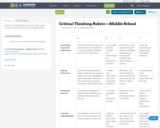
A rubric in student language used by middle school students to self-assess their critical thinking skills.
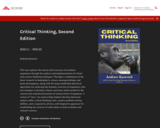
MHCC - WR122
Short Description:
This text explores the nature and structures of academic arguments through the analysis and implementation of critical and creative thinking techniques. Through a combination of the latest research in hemispheric science, neuropsychology, and brain development, along with the long-established rhetorical algorithms for analyzing the dynamic structure of arguments, this text attempts to develop a clearer and more robust model for the construction and deconstruction of various forms of argument. A variety of "texts" are used to help students develop rhetorical analysis skills, critical thinking tools, creative problem solving abilities, and a responsive, diverse, and integrative apparatus for establishing the veracity of truth claims in both academic and cultural contexts.
Word Count: 16779
(Note: This resource's metadata has been created automatically by reformatting and/or combining the information that the author initially provided as part of a bulk import process.)

This is a discussion designed in Canvas to help critical thinking students apply their knowledge of argumentation and syllogisms.

A brief overview of how students will learn critical thinking skills in their introductory English college course.
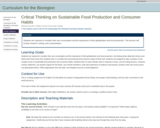
Students are assigned to research, write, take a position and present it on the complex issue of sustainable food production and consumer habits.
(Note: this resource was added to OER Commons as part of a batch upload of over 2,200 records. If you notice an issue with the quality of the metadata, please let us know by using the 'report' button and we will flag it for consideration.)
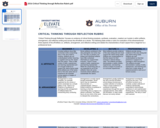
Critical Thinking through Reflection’ focuses on evidence of critical thinking (analysis, synthesis, evaluation, creation) as it exists in within artifacts, arrangement, and reflective writing and across the ePortfolio as a whole. The following table enlists a rubric for evaluation of the aforementioned three aspects of the ePortfolio (i.e. artifacts, arrangement, and reflective writing) and details the characteristics of each aspect from a beginner to a professional level.
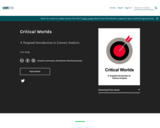
This textbook is designed for English literature and creative writing majors, especially those planning to transfer to a four-year institution. Our English 211 course also meets the Research and Writing requirement for Liberal Arts majors. One of my primary goals is to prepare you for the work you will do in upper-division literature courses. To accomplish this goal, we will do a substantial amount of reading and writing each week. We will explore literary analysis, a variety of theoretical approaches to literature, and some basic information on literary research. The culmination of this class will be a group-produced critical edition Pressbooks publication, Beginnings and Endings: A Critical Edition.
OER Philosophy and Use of Generative AI:
This text represents a collaboration, reuse, and sharing of others’ Creative Commons licensed content, including student work. As much as possible, I have tried to create a text with diverse perspectives and writing styles. I invite you to provide feedback as well as using, reusing, or remixing any of the materials in this text in accordance with the terms of their Creative Commons licenses.
As I was writing this textbook, ChatGPT and other new generative artificial intelligence technologies were introduced. I decided to explore how these tools could assist in developing content for OER. I also am experimenting with these tools in crafting assignments for students.
I acknowledge that ChatGPT does not respect the individual rights of authors and artists and ignores concerns over copyright and intellectual property in its training; additionally, I acknowledge that the system was trained in part through the exploitation of precarious workers in the global south. In this work I specifically used ChatGPT to assist me in outlining chapters, explaining basic terminology, drafting model essays, and creating student prompts. I have included links to the chats I used for this book in an appendix.
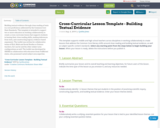
Building textual evidence through close reading of texts is a core proficiency addressed by the Common Core State Standards. This template is intended to support two or more educators in working collaboratively to create a cross-curricular lesson that supports students in honing their close reading skills, making inferences from texts, and constructing logical, evidence-based arguments. The toolkit was written for collaborative teams of ELA, Math and Social Studies or Science teachers, but can be used by other subject area configurations as well. The toolkit was developed by ISKME in collaboration with educators from 8 different states, who possessed varied subject area expertise.
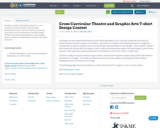
Google document outlining the steps for a cross curricular activity between a class studying Shakespeare (in my case it was Theatre) and an Art class (in my case it was Advanced Graphic Design). Students are tasked with designing a
t-shirt using a quote or image from Shakespeare and the school logo and name.
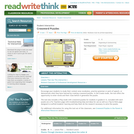
This tool allows students to complete crossword puzzles on a variety of grade-appropriate topics, and also create and print their own crossword puzzles.
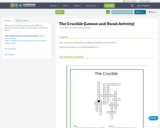
This resource includes a lesson on the different elements of The Crucible. It also includes a vocabulary activity.
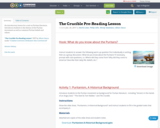
An introductory lesson for a unit on Puritan literature. Introduces students to the history of the Puritan movement as well as common Puritan beliefs and values.
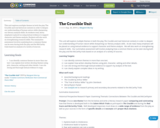
This unit explores multiple themes in both the play The Crucible and real historical contexts in order to deepen our understanding of human nature while sharpening our literary analysis skills. As students read, heavy emphasis is placed on using textual evidence to support character and theme analysis. Students will also work on strengthening research skills. The summative assessment involves analyzing how a common theme can be seen during both the play and the McCarthy trials based on analysis of a variety of sources.
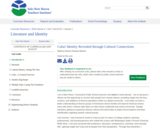
Through what lens do we identify a nation, its leaders, and its people? Can those of us outside of a select culture impartially examine and embrace a nation and its constituents through multiple lenses such that we objectively identify a country and its people—many of whose descendants live within American shores? How do we enlighten future generations to become thinkers who empathize, communicate, and interact with diverse cultures, ultimately helping them develop working relationships with diverse people within our country and ever-expanding global community? How can understanding identity and collective consciousness serve as a unifying force for a community, a nation, and the world? By immersing students in hands-on research activities, engaging discourse with entrepreneurs and individuals from diverse cultures, and more, we can perhaps evoke positive change in this regards. “Cuba! Identity Revealed” serves as a proposed “discovery prototype” to achieve this end. Using the country of Cuba as a springboard, young learners will go beyond textbook knowledge, media images, and sweeping generalizations to better understand and constructively embrace diverse cultures that exist both within and beyond America’s shores.